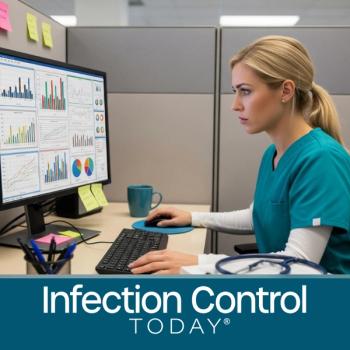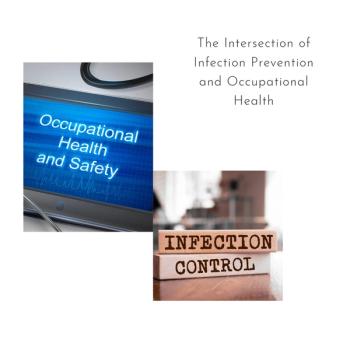
Thriving Through the Decade: Healthy People 2030
The Healthy People 2030 initiative aims to improve the health of the United States’ population through research and developmental objectives through the end of the decade.
The Healthy People 2030 initiative, originally created in the 1970s, strives to improve national health and well-being through development and research goals over the next decade.
The HAI workgroup includes experts from multiple federal agencies, including Agency for Healthcare Research and Quality (AHRQ), CDC, Centers for Medicare and Medicaid Services (CMS), Office of Disease Prevention and Health Promotion (ODPHP), and National Center for Health Statistics (NCHS); this group has been guiding the Healthy People initiative since 2010.
In a conversation with Holly Montejano, MS, CIC, CPHQ, VA-BC, a clinical science liaison for PDI, Infection Control Today® (ICT®) delved into the details of the Healthy People 2030 initiative.
ICT: What does the updated Healthy People 2030 initiative focus on health care-associated infections consist of? What are the changes?
Holly Montejano, MS, CIC, CPHQ, VA-BC: The overall vision of the initiative is [as noted on the website] “a society in which all people can achieve their full potential for health and well-being across the lifespan,” and the mission is to “promote, strengthen and evaluate the nation’s efforts to improve the health and well-being of all people.”
The overarching goal of equitable access to resources addresses disparities, health literacy, and social determinants of health, ultimately helping communities overall achieve greater health outcomes. The Healthy People data sets help drive the objective development to improve the nation’s overall health and well-being.
As mentioned, this report addresses multiple public health concerns. The Healthy People 2030 initiative continues to prioritize health care-associated infections (HAI). These events are detrimental to patient safety, and many can be prevented when best practices are followed.
The 2020 report focused on 2 HAIs: CLABSI and MRSA infections.
While the CLABSI objective has been removed from the 2030 HAI objectives, all of us working in the orbit of patient safety know we still have work ahead of us- mainly due to the pandemic!) the MRSA infection objective has been retained in the 2030 report.
The HAI focus for 2030 is on the continued reduction of
It is essential to note the focus extends beyond the acute care setting, as care settings are shifting outside of just the critical space where prevention efforts are needed and often under-resourced. A regional approach with coordinated action between facilities has been proposed for successful reductions of the measures in focus.
For a global perspective of the report, the website provides a timeline that illustrates the time point releases of new data, tools, and resources- and the development of the Healthy People 2040 report. (
ICT: Healthy People 2030 has 358 core or measurable objectives. Please give our listeners some idea of what a few of those are.
HM: Healthy People 2020 had more than 1000 core objectives, while the 2030 report includes just 358 core objectives. A subset of high-priority objectives –leading health indicators (LHIs)- encompass public health issues within different age groups and span topic areas. LHIs assist organizations with identifying key issues to focus resources on.
While the focus remains on eliminating health disparities and creating equitable access to resources for people to live healthy and longer lives (as it did in 2020), Healthy People 2030 has a spotlight on public health issues. Reducing the number of objectives allows for prioritizing public health issues, such as preventing and treating infectious diseases.
For those who reference Healthy People objectives--whether through organizational partnerships or individuals within their professional roles, ODPHP has a tool within Healthy People 2030 that allows for an efficient platform to compare objectives of the previous and current reports over the decades. The Healthy People 2020 objectives have been labeled as either retained, modified, related, or removed in terms of their appearance in the 2030 report.
There are 3 different types of objectives included in the 2030 report- core, developmental, and research. The goal within the core objectives is to move the needle on performance for those particular focus areas using evidence-based interventions. Each of these core objectives has a “performance status” that is tracked throughout the decade. The report website provides links to best practice documents to help health care organizations align with and achieve these goals.
ICT: What specific HAIs are they concerned about?
HM: The core objectives for 2030 include the reduction of health care onset Clostridioides difficile infections (HO-CDI) and hospital-onset methicillin-resistant Staphylococcus aureus (HO-MRSA) infections. An additional developmental objective (which may become a core objective as more data is available) includes improving antibiotic use in the outpatient setting. Antimicrobial stewardship is a foundational concern for addressing some HAI objectives, most obviously C difficile.
ICT: What do these changes mean for hospitals and other health care facilities?
HM: The HAI focus in Healthy People 2030 includes metrics that the acute care setting is already capturing and reporting to NHSN. The need for continued improvement is paramount when perusing the report. I like the attention to health literacy—we know how important the patient’s understanding of their health status is so they can advocate for their own care. The report includes a “tools for action” resource to assist HCW and public health professionals in incorporating objectives into the workflow. The report also provides access to evidence-based resources by topic for people working on the frontlines of many of these public health and infection prevention initiatives.
ICT: Do you have anything else you would like to add?
HM: I’ve always been a proponent of partnerships and a collaborative approach. In the context of my work, partnering public health with health care epidemiology and infection prevention is critical to support patient safety and community health. People seek out care along the continuum of the health care space. The more robust the understanding of the resources that exist when working in these various settings, the better the outcomes for the people we care for. When we provide educational tools to the health care worker and the patient, we help ensure a comprehensive understanding and expectation of best practice and evidence-based care.
Newsletter
Stay prepared and protected with Infection Control Today's newsletter, delivering essential updates, best practices, and expert insights for infection preventionists.






